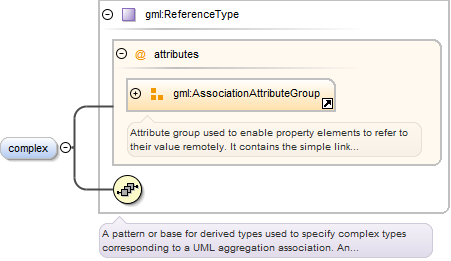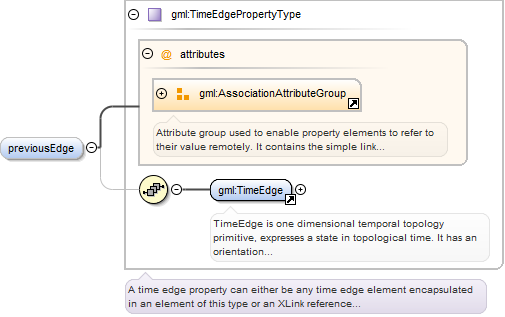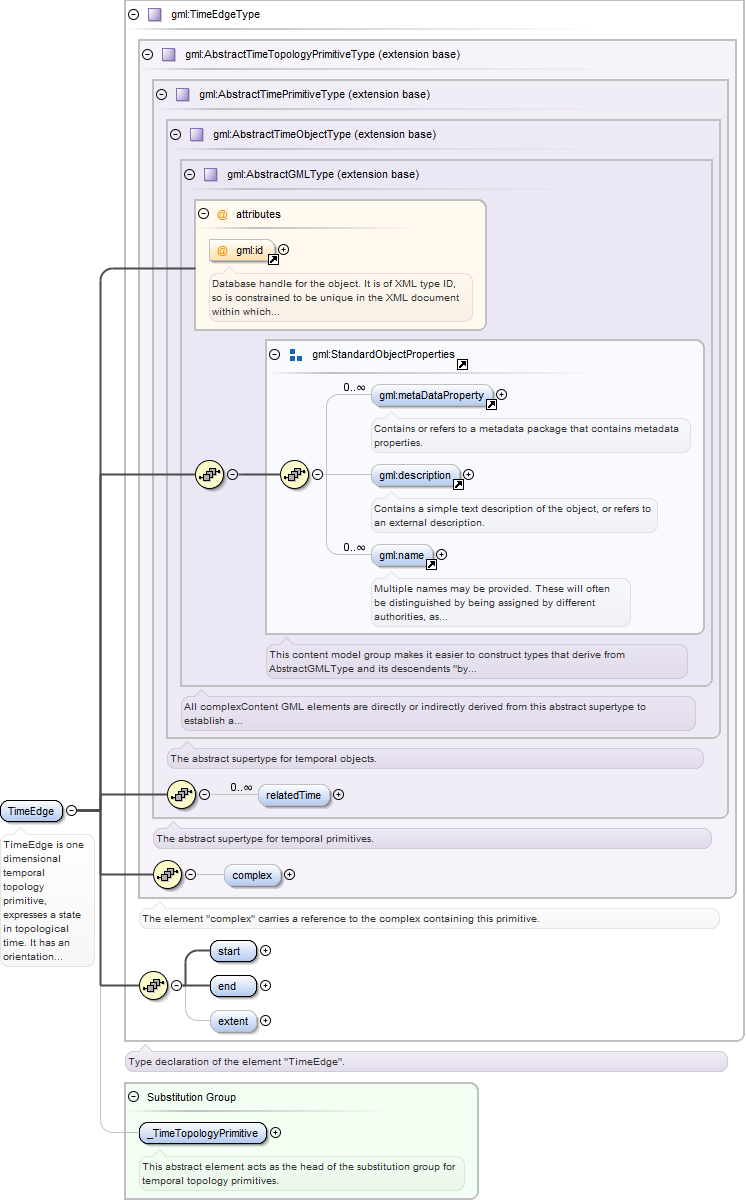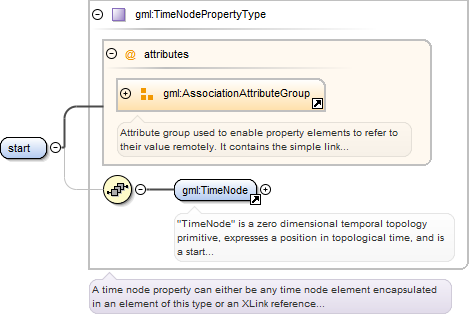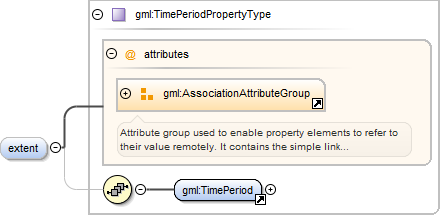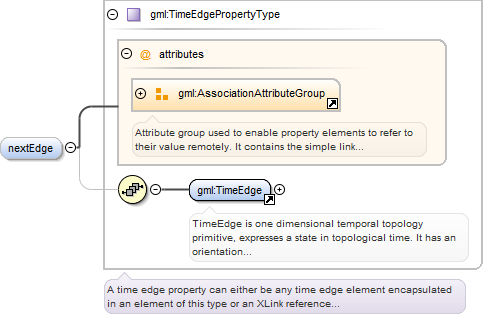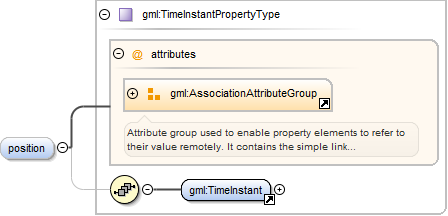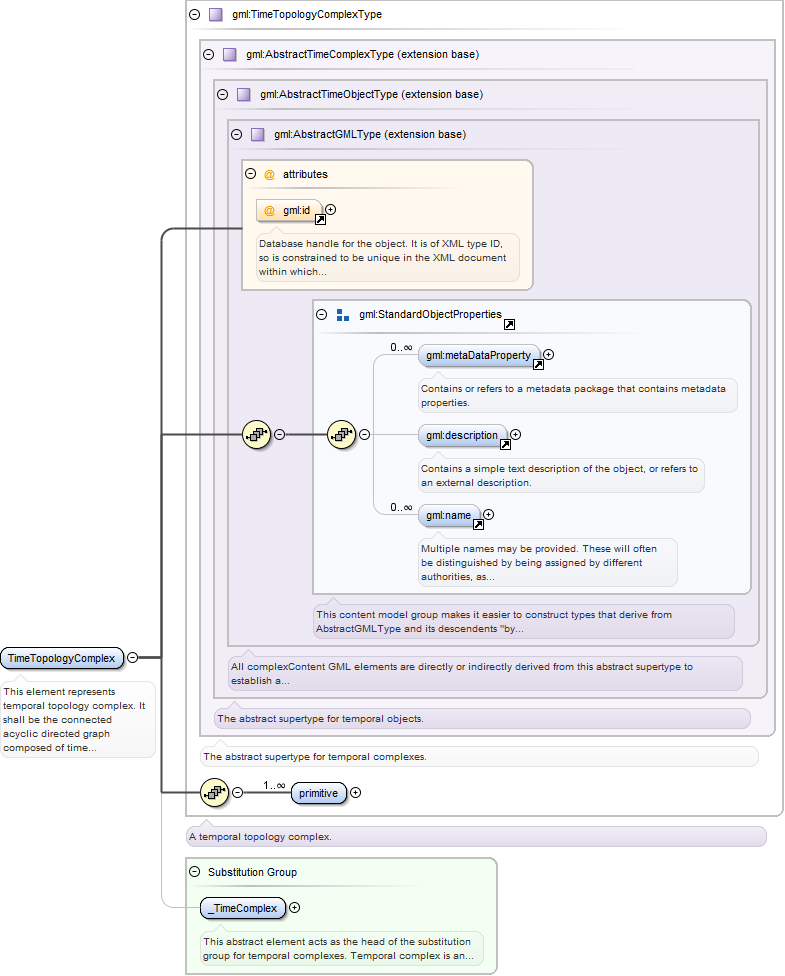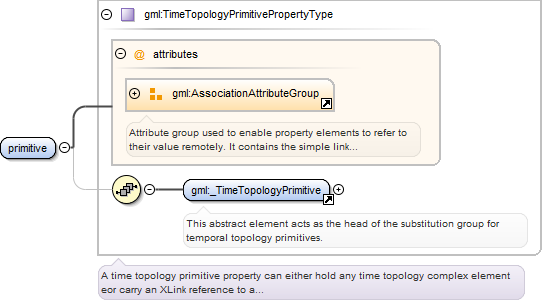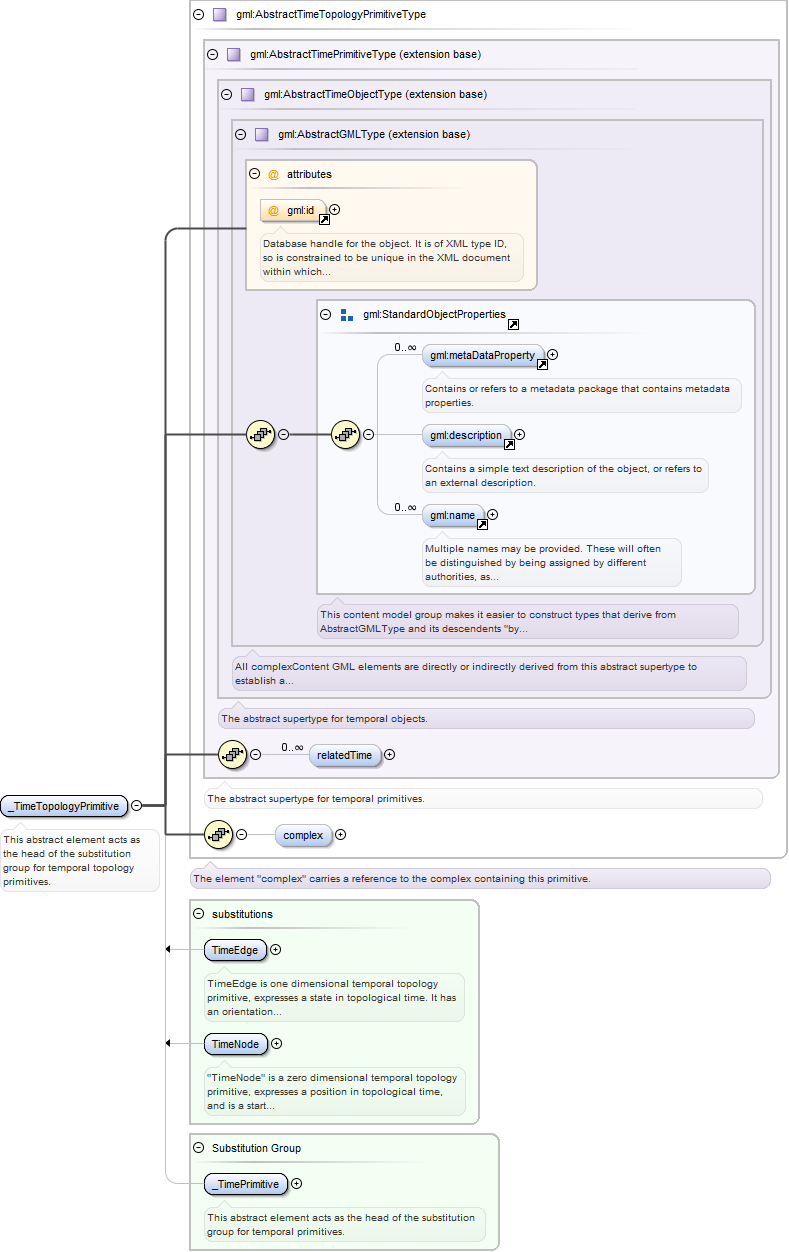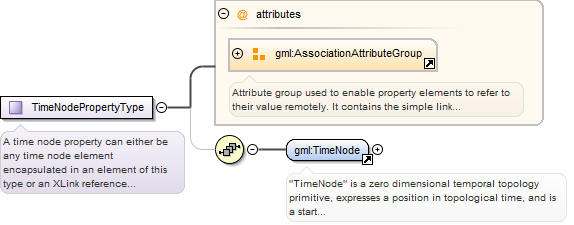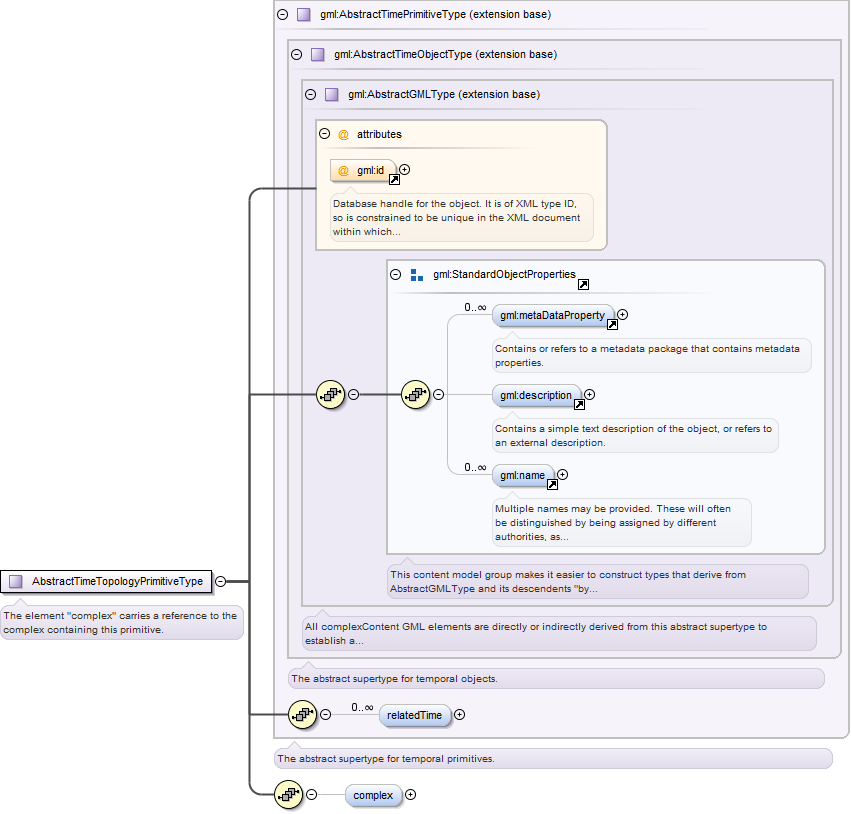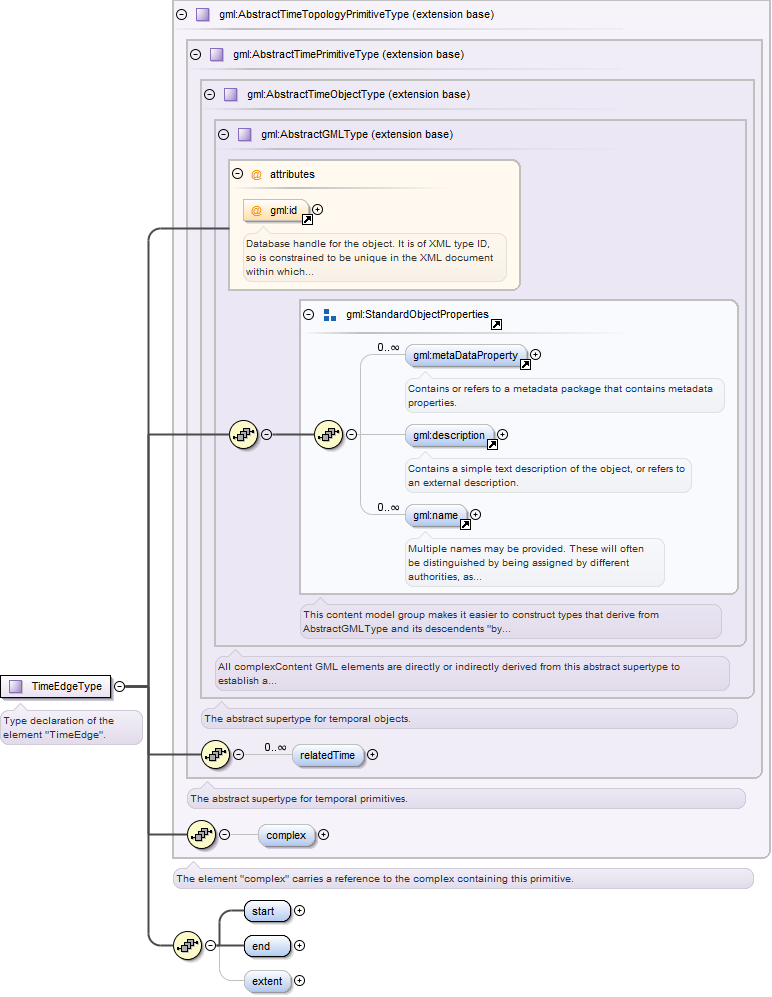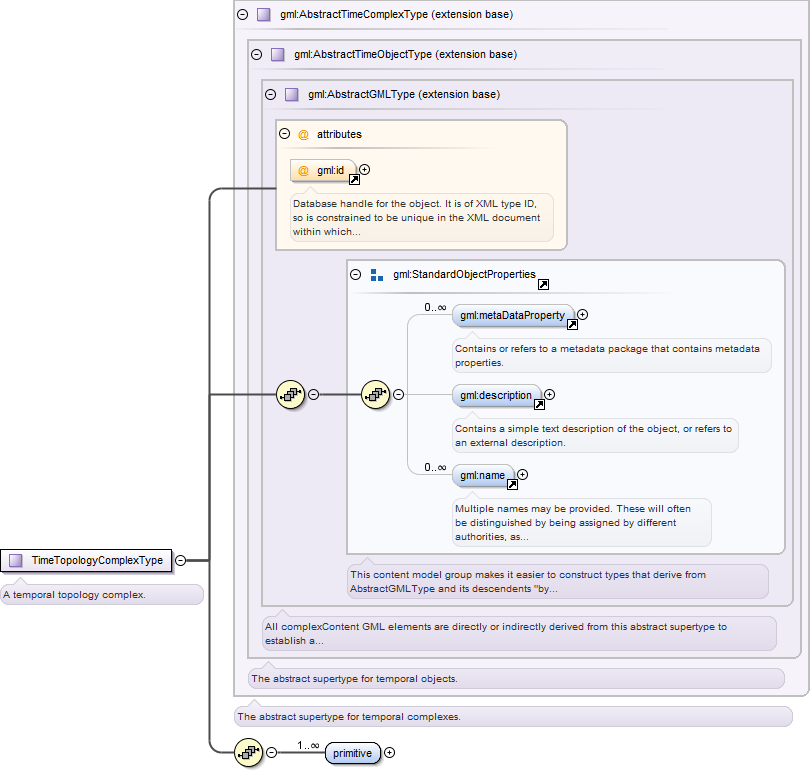| Namespace | http://www.opengis.net/gml | ||||||||||||
|
Annotations
|
"TimeNode" is a zero dimensional temporal topology primitive,
expresses a position in topological time, and is a start and an end of time edge, which represents states of time.
Time node may be isolated. However, it cannot describe the ordering relationships with other primitives.
An isolated node may not be an element of any temporal topology complex.
|
||||||||||||
|
Diagram
|
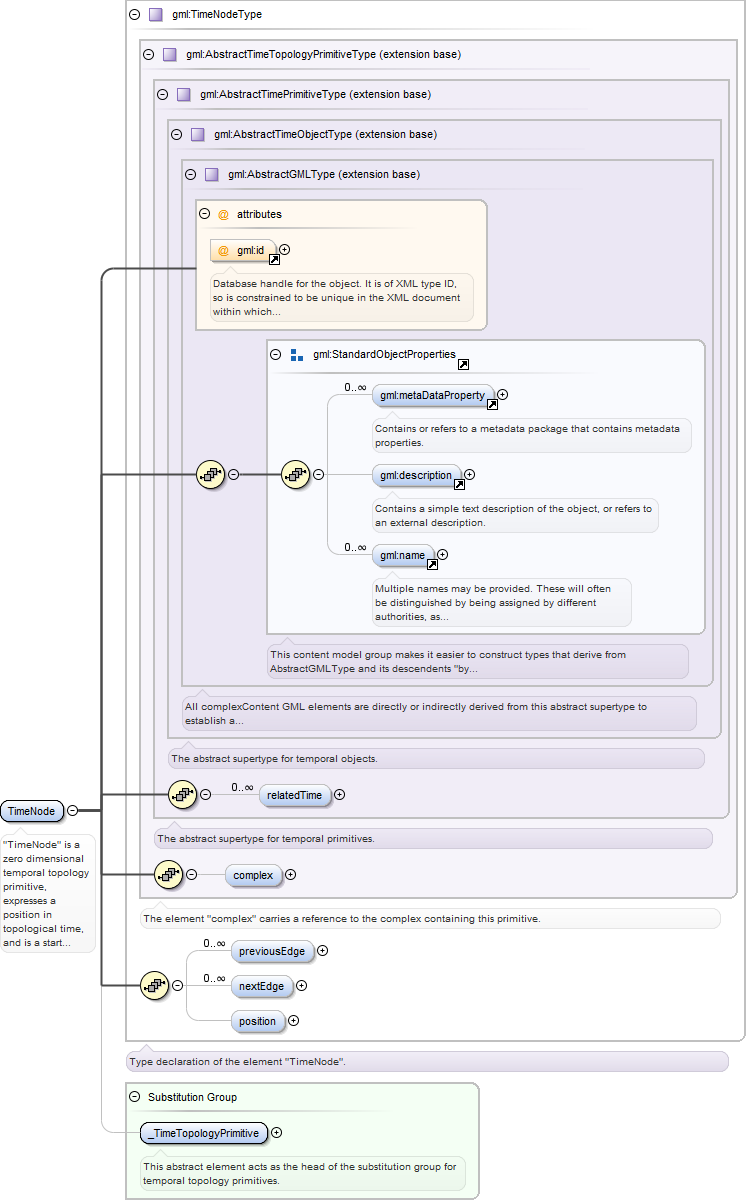 |
||||||||||||
| Type | gml:TimeNodeType | ||||||||||||
| Type hierarchy | |||||||||||||
|
Properties
|
|
||||||||||||
| Substitution Group Affiliation | |||||||||||||
|
Used by
|
|
||||||||||||
| Model | gml:metaDataProperty* , gml:description{0,1} , gml:name* , gml:relatedTime* , gml:complex{0,1} , gml:previousEdge* , gml:nextEdge* , gml:position{0,1} | ||||||||||||
| Children | gml:complex, gml:description, gml:metaDataProperty, gml:name, gml:nextEdge, gml:position, gml:previousEdge, gml:relatedTime | ||||||||||||
|
Instance
|
|
||||||||||||
|
Attributes
|
|
||||||||||||
|
Source
|
|
